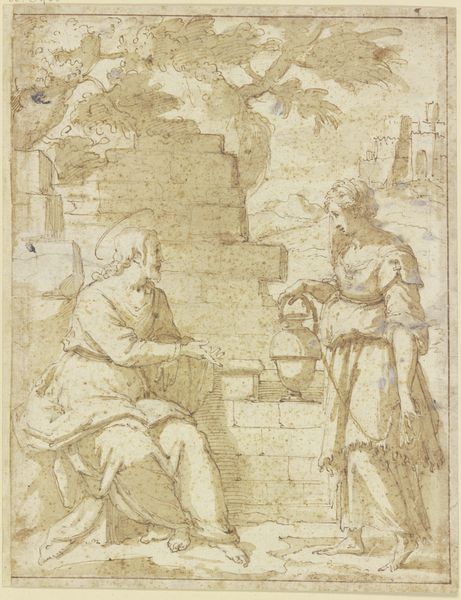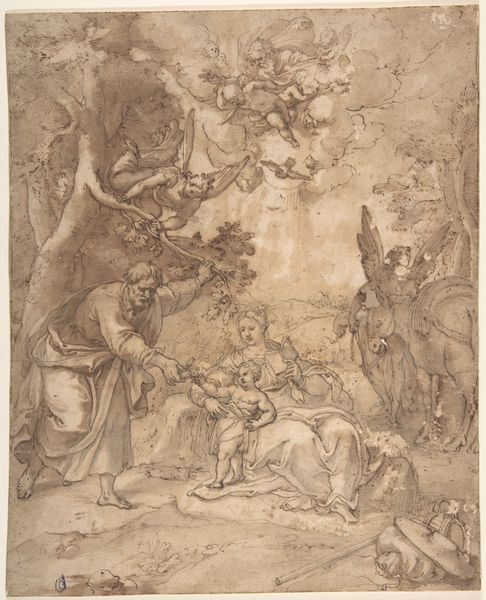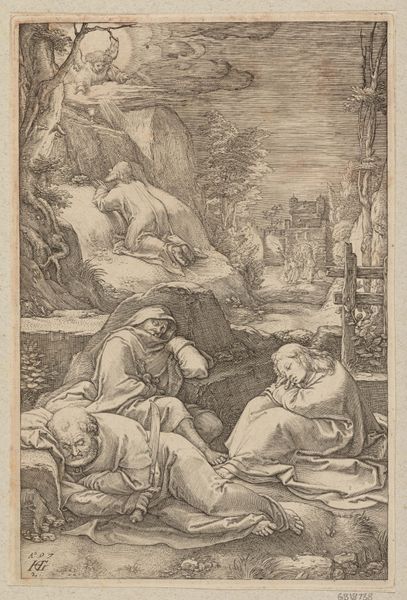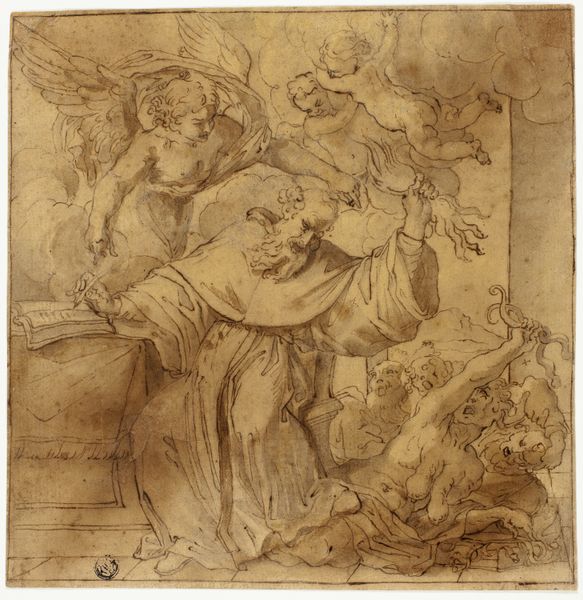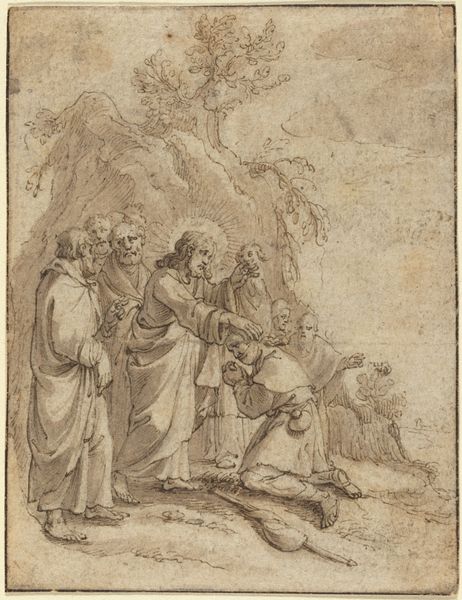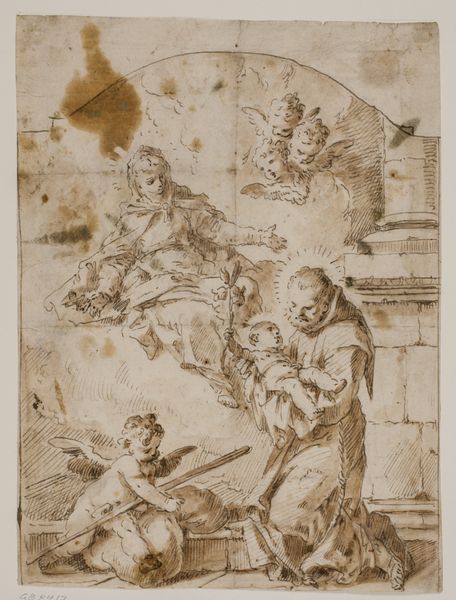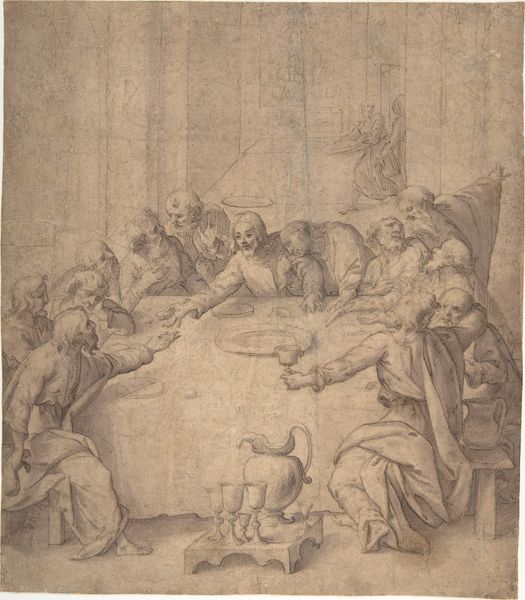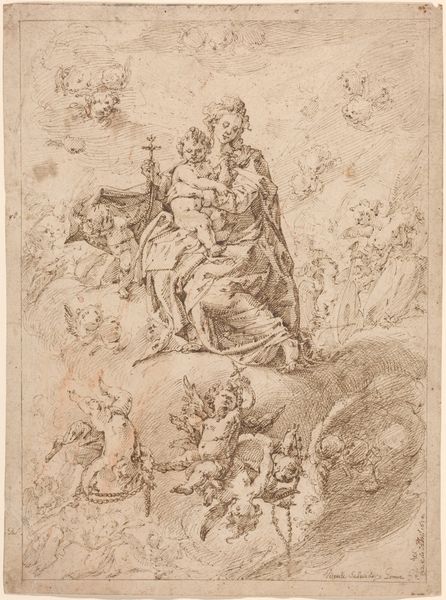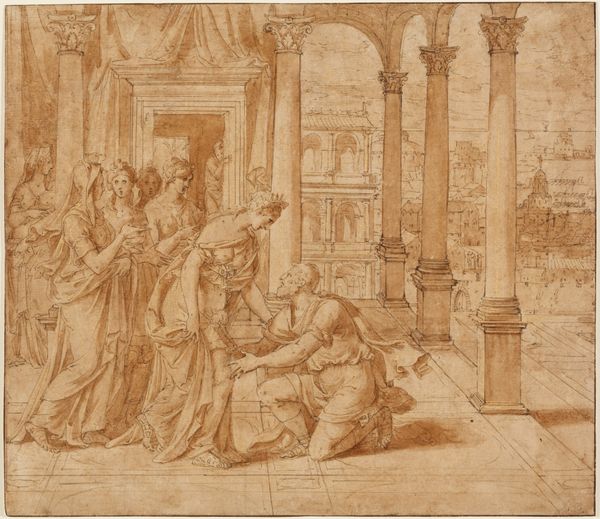
drawing, print, paper, ink, chalk, pen, charcoal
#
portrait
#
drawing
#
narrative-art
# print
#
charcoal drawing
#
paper
#
11_renaissance
#
charcoal art
#
oil painting
#
ink
#
pencil drawing
#
chalk
#
pen
#
charcoal
#
northern-renaissance
#
charcoal
Dimensions: 194 × 189 mm
Copyright: Public Domain
Curator: I am immediately drawn to the apparent fragility of this image, this very old drawing that depicts St. John the Baptist with the Lamb. It is from around 1520, and comes to us from the hand of Aert Claesz. It’s a work rendered in pen and ink with charcoal and white chalk on paper. Editor: The mood is overwhelmingly somber, wouldn’t you say? The sepia tones only amplify that. The figure is hunched, almost collapsing inward. It’s less a triumphant saint and more a figure weighed down, reflecting perhaps a deeper crisis of faith or the precarity of life. The landscape behind the saint gives off that aura. It's all bleakness. Curator: It is important to remember that during the Renaissance, representations of biblical figures often served not just as religious icons, but as reflections of the human condition. Here, John's traditionally symbolic association with purity—symbolized by the lamb—is set against a background suggesting turmoil or suffering. In the socio-political reality of 16th century Europe, what narratives of power and piety was the work reflecting, and also subverting? Editor: Well, thinking about symbols, let's not overlook the Lamb itself, do you agree? Typically, it's seen as an emblem of Christ's sacrifice. But here, nestled so closely against John, it could represent innocence facing an uncertain fate, the sacrifice to come, or perhaps, even vulnerability requiring protection. And the book…do you notice the way his fingers curl over it? Curator: Yes! As a primary site for the production and dissemination of Christian doctrine, it becomes a fraught object of textual authority and knowledge. This invites questions of authorship, interpretation, and power that continue to echo through today's debates on religious texts and social ethics. It all forces me to wonder about whose John this is, who produced this image of John for what purposes. Editor: So true, I find the image deeply moving. Thinking about it, I wonder if there is also a dialogue occurring between vulnerability and divine mandate? Or, could Claesz, was he possibly portraying a Saint John grappling with his purpose? Curator: Considering the context, it could definitely serve as a compelling visual representation of intellectual and spiritual conflict, and a potent emblem for individuals and communities engaged in struggles for autonomy. Editor: Thinking of those complex themes that emanate, it has offered me new ways to consider what happens when we reflect upon a Renaissance figure, and allow his symbolic narrative to speak across these temporal divides. I appreciate this encounter very much!
Comments
No comments
Be the first to comment and join the conversation on the ultimate creative platform.

